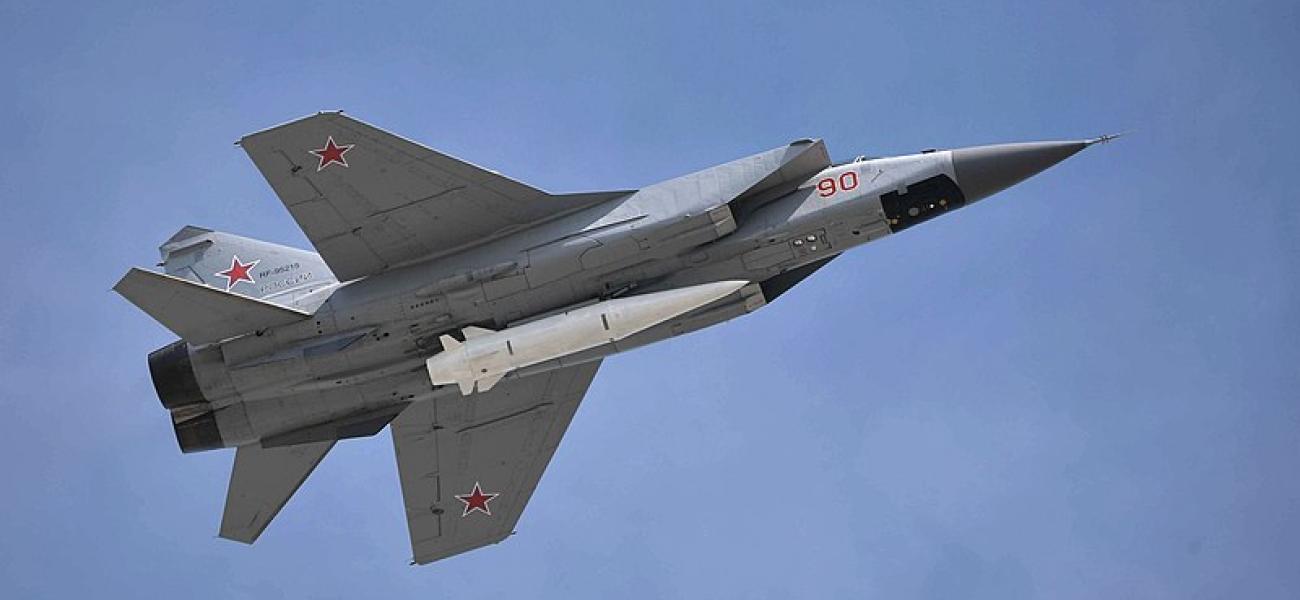
Russia’s Nuclear-Capable Missiles: A Question of Escalation Control
This article was originally published by IISS.
Two years into Russia’s war in Ukraine, Moscow’s army has sustained enormous losses of both troops and materiel, with no indications that it will back down. At the same time, Russia is intentionally striking Ukrainian civilian infrastructure in large-scale missile and drone attacks – targets that are of no direct military value. However, Russia’s arsenal of conventionally armed land-attack missiles has proved less effective than Moscow hoped.
Examining these three areas – Russia’s ability to absorb military losses, its deliberate targeting of civilian infrastructure and the limitations of its conventionally armed land-attack missile arsenal – provides potential insights into Russia’s theatre nuclear doctrine. Furthermore, it raises questions about Moscow’s ability to control escalation.
A high tolerance for losses
Russia’s capacity to sustain military losses is considerable, and it outstrips that of the United States and Western allies. US intelligence estimates that, in the first two years of its war in Ukraine, Russian casualties surpassed 315,000 dead or injured, with more than 1,800 tanks, 90 aircraft and 15 naval vessels destroyed – including its Black Sea flagship, the Moskva. In comparison, a total of nearly 212,000 US soldiers were killed or wounded in nine years of combat operations in Vietnam.
This has key implications for American and Russian military strategy as the two countries try to calculate each other’s threshold of ‘unacceptable losses’ to force the other side to concede. If the US and its allies’ tolerance for losses among their own personnel and materiel is an order of magnitude lower than Russia’s, then, in the event of a direct confrontation, Russia could be incentivised to use nuclear weapons to inflict an unacceptable number of losses on NATO armed forces to force capitulation.
Civilian infrastructure destruction
As Russia destroys civilian infrastructure in Ukraine, it appears that Moscow is pursuing a strategy in which civilian casualties are a feature, not a consequence, of its campaign. This stands in contrast to the objectives of the United States, which seeks to minimise civilian casualties in military operations, including through the use of precision-guided weapons and improved targeting procedures.
Russia also appears to have a higher tolerance for casualties among its own civilian population than the US. It has conducted limited evacuations of civilians near the Russia–Ukraine border and has not sought to provide reliable defences for population centres in border areas. Instead, it has prioritised the defence of its senior leadership and nuclear command and control in Moscow and other locations far from the front line.
This indicates that, in the event of a theatre war, there is a possibility that Russia would target NATO civilians, potentially by directing nuclear weapons at cities to quickly break Western will without escalating to a general nuclear war with the US.
An imperfect non-strategic nuclear arsenal
Ukraine’s success at intercepting Russia’s land-attack cruise missiles has arguably demonstrated a vulnerability in Russia’s nuclear-war planning. Nearly all of the conventional land-attack systems in the Russian inventory have nuclear analogues. The high rate of Ukrainian interceptions of these missiles suggests that Russia could also struggle to calibrate nuclear strikes using their nuclear-armed variants. Russia has made extensive use of the conventionally-armed Kh-101 (RS-AS-23A Kodiak) air-launched land-attack cruise missile, which uses the same airframe as the nuclear-armed Kh-102 (RS-AS-23B Kodiak). Its vulnerability to being shot down by Ukraine’s missile defences means Russia may need to use multiple missiles to increase the probability of one successful strike.
Ukraine has also shot down the Russian 9M723 Iskander (RS-SS-26 Stone) ground-launched short-range ballistic missile, the Kinzhal (RS-AS-24 Killjoy) air-launched ballistic missile and the 9M728 (RS-SSC-7 Southpaw) ground-launched cruise missile. Russian sources previously claimed these systems were invulnerable to air defences.
This has possible implications for aspects of Russia’s nuclear strategy, as Moscow may consider that launching calibrated nuclear strikes using small numbers of non-strategic nuclear weapons (NSNW) would allow it to attempt to control a conflict. For example, limited theatre nuclear strikes with NSNW could be used to prevent the US from escalating to a general nuclear exchange or to end the conflict on Russian terms. But if Russia’s NSNW face the same survivability issues as their conventional counterparts, Moscow would need to fire a larger number of nuclear-armed missiles to breach NATO defences and hit its target. Such an attack risks being interpreted by the US as a much larger nuclear strike despite Russia’s more limited intentions. This could undermine any Russian aim to limit escalation and prevent a retaliation against Russian territory as a result.
Russia’s nuclear doctrine
Russia’s capacity for military losses, its tolerance of civilian casualties and the apparent limitations of those systems in its arsenal that have both conventional and nuclear-armed variants give rise to two possible conclusions regarding its nuclear doctrine. Firstly, given Russia’s indifference to civilian casualties in Ukraine, it stands to reason that Russia would see value in using NSNW to target NATO troops and potentially population centres to destroy the Western will to fight, discourage US escalation or terminate the conflict on Russia’s terms. Russia appears to be less worried about the military and civilian cost of any potential retaliation at the battlefield or theatre level.
Secondly, if Russia’s confidence in its ability to control escalation is further eroded by the poor performance of its older dual-capable missiles, Moscow may decide to build up its arsenal to include faster delivery systems, such as the 3M22 Zircon (RS-SS-N-33), which was first deployed in early 2023. Until such an arsenal is in place, however, Russia’s confidence in its escalation control may remain uncertain, giving the West a temporary reprieve from at least some Russian nuclear threats.
Read the original article at IISS.
Opinions expressed herein are solely those of the author, unless otherwise stated. Photo by Kremlin.ru shared under the Creative Commons Attribution 4.0 International license.
